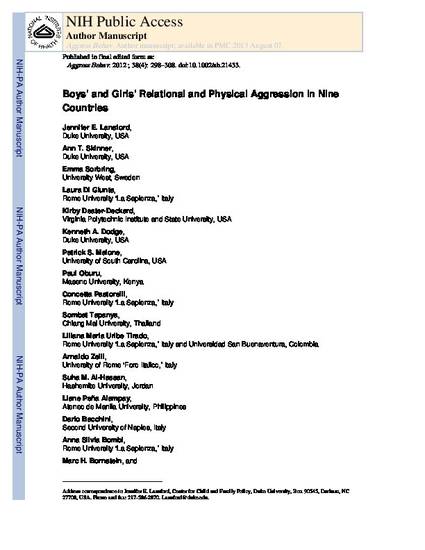
Distinguishing between relational and physical aggression has become a key feature of many developmental studies in North America and Western Europe, but very little information is available on relational aggression in more diverse cultural contexts. This study examined the factor structure of, gender differences in, and associations between relational and physical aggression in China, Colombia, Italy, Jordan, Kenya, the Philippines, Sweden, Thailand, and the United States. Children ages 7 to 10 years (N = 1410) reported on their relationally and physically aggressive behavior. Relational and physical aggression shared a common factor structure across countries. Unsurprisingly, boys reported being more physically aggressive than girls across all nine countries; surprisingly, there were no significant gender differences in relational aggression. In all nine countries, relational and physical aggression were significantly correlated (average r = .49). The countries differed significantly in the mean levels of both relational and physical aggression that children reported using and with respect to whether children reported using more physical than relational aggression or more relational than physical aggression. Despite mean level differences in relational and physical aggression across countries, the findings provided support for cross-country similarities in associations between relational and physical aggression, as well as links between gender and aggression.
